

RINA is the first and only classification society to introduce an additional notation to assess the thermal performance of a yacht.
Whilst a decrease in required energy on board is desirable, trends in the new build market show the opposite trend. Modern yachts carry more volume (i.e., higher gross tonnage and displacement) on the same length compared to older vessels. Newly optimised hulls with wider beams, combined with novel additional features, result in increased energy demands on both propulsion systems and hotel load.
Over a typical year of operation for a modern superyacht, the hotel load is the higher consumer of power. Studies demonstrate that, in many cases, HVAC (Heating, Ventilation, and Air Conditioning) is the most energy thirsty system of all.
One of the most compelling reasons to optimize thermal efficiency is the potential for substantial operational cost savings: fuel consumption can be significantly reduced, leading to lower fuel expenses, famously among the highest costs of operating a superyacht.
Indeed, optimising the thermal efficiency of a superyacht is a critical factor in reducing operational costs, enhancing overall performance, and promoting eco-consciousness.
Efficient insulation, advanced HVAC systems, and waste heat recovery technologies are pivotal in this regard. High-quality insulation minimizes unwanted heat exchange with the environment, while modern HVAC systems are equipped with smart controls to ensure optimal temperature management. Waste heat recovery systems, which capture and reuse heat from engine exhausts or generators, can further cut down on energy waste.
Moreover, a thermally efficient superyacht can achieve a better range. Reduced fuel consumption means longer intervals between refuelling stops, allowing for extended voyages.
The “Thermally Efficient Yacht” notation by RINA ranks the vessel by adopting a goal-based methodology and a comparative analysis against baseline superyachts, rewarding vessels that achieve higher standards. As the Classification Society with the largest fleet of superyachts worldwide, RINA has an extensive database of industry standards.
It is a design-based notation and can be assigned during the engineering process. It analyses the performance of the glazing, the insulation package and the HVAC system. The notation comprises 3 different levels of thermal optimisation, so that each individual benefit can be captured.
In today’s world, environmental responsibility is becoming a priority for the luxury segment, and superyachts, due to their size and energy requirements, have a significant environmental footprint. Optimizing thermal efficiency is a proactive step towards minimizing this impact.
By receiving this new prestigious notation, owners can enjoy the unparalleled luxury of superyachts whilst contributing to a more sustainable future for our oceans and planet, as well as achieving a higher resell value for their assets.
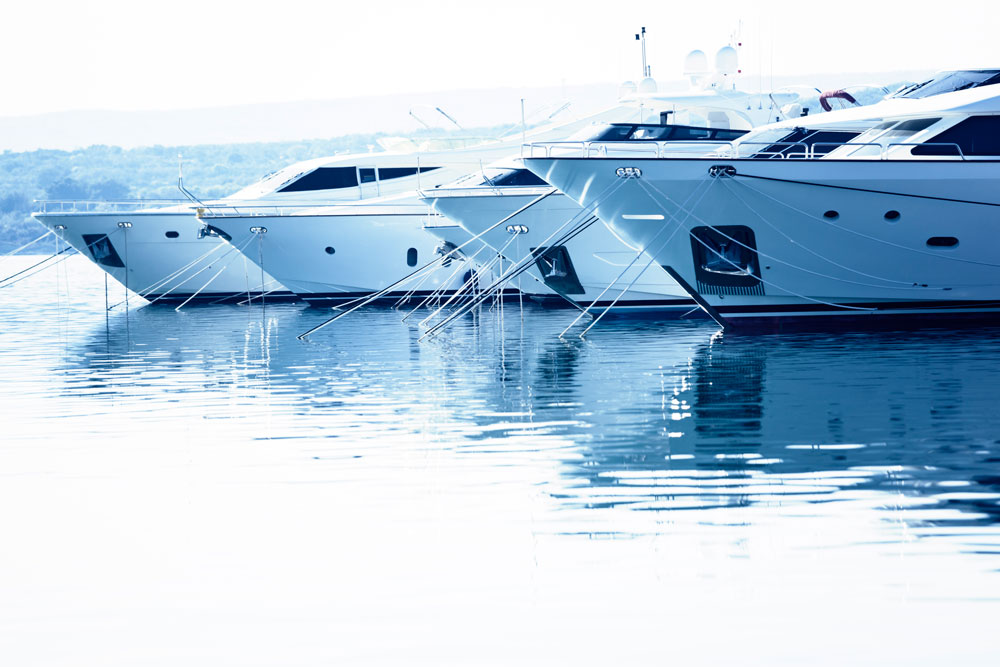
This ambitious project has not only showcased the shipyard’s expertise but has also set a new benchmark in the luxury yacht industry.
The journey of Scintilla Maris from a utilitarian fishing vessel to a lavish yacht was an intricate process that demanded meticulous planning, expert craftsmanship, and stringent quality control.
The conversion was overseen by RINA, one of the largest yacht classification societies globally. RINA’s involvement was crucial in ensuring that the design and conversion met the highest standards of safety, performance, and luxury.
Vision and Design
The vision behind Scintilla Maris was to create a vessel that harmonized functionality with opulence. The designers (Vripack) aimed to retain the robust structural integrity of the fishing vessel while infusing it with the aesthetics and amenities of a luxury yacht. The result is a yacht that boasts both durability and elegance, capable of enduring rough seas while offering an unparalleled experience of comfort and style.
The Conversion Process
The conversion process was comprehensive and complex. The initial phase involved stripping the vessel of its original fittings and structures. The hull was then inspected and reinforced to meet the new design specifications. Advanced materials and state-of-the-art technologies were employed to ensure the yacht’s performance and longevity.
One of the key aspects of the conversion was the redesign of the interior spaces. The new layout includes spacious cabins, a grand salon, a gourmet kitchen, and multiple entertainment areas. High-end materials such as exotic woods, marble, and bespoke fabrics were used to create an ambiance of sophistication and luxury. Each cabin is equipped with modern amenities, ensuring a comfortable stay for the guests.
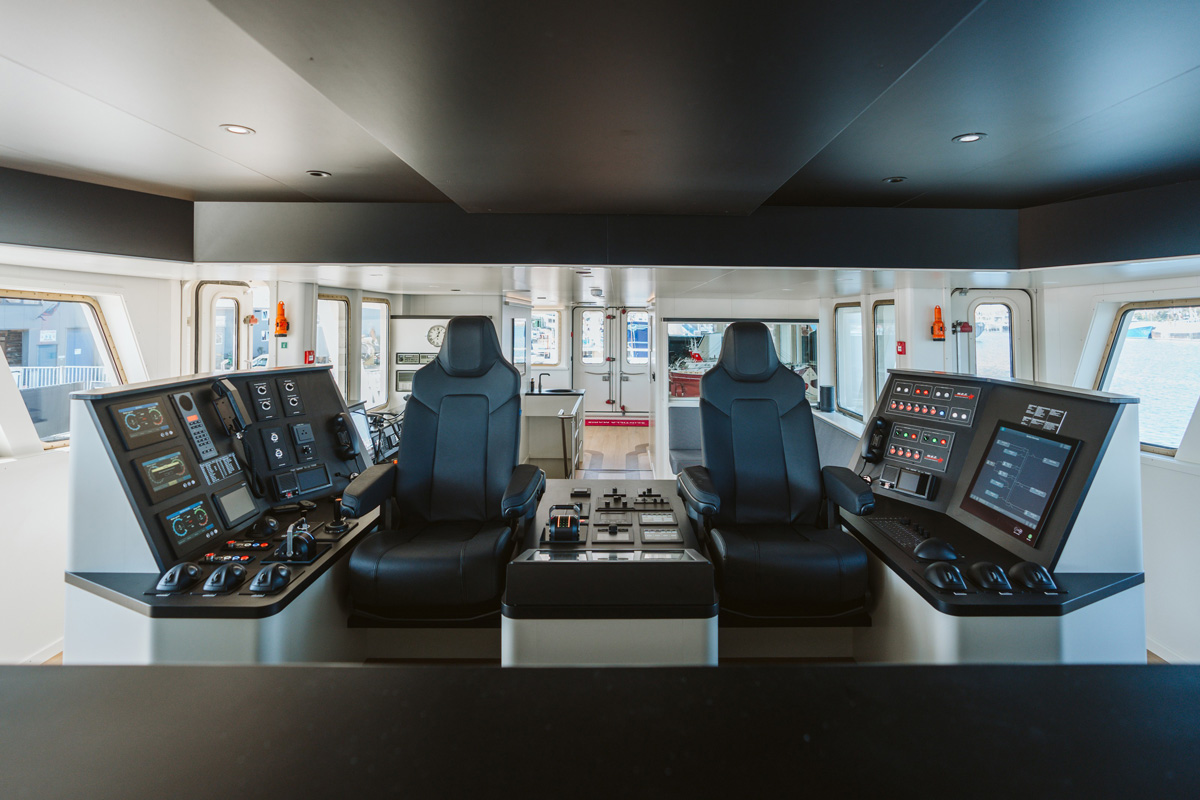
Certification by RINA
RINA played an integral role throughout the conversion process. Its team of experts worked closely with the shipyard, providing guidance and supervision at every stage. It conducted rigorous inspections and tests to ensure that the yacht complied with international safety and quality standards. The certification by RINA is a testament to the yacht’s excellence in design, engineering, and construction.
A legacy of excellence
Scintilla Maris stands as a beacon of innovation and craftsmanship in the world of luxury yachts. The successful conversion of a fishing vessel into a high-end yacht is a testament to the expertise of Damen Maaskant Shipyard and the stringent standards upheld by RINA.
The yacht is not only a marvel of engineering but also a symbol of how traditional maritime vessels can be reinvented to meet modern luxury demands. As Scintilla Maris sails through the waters, it carries with it a legacy of transformation and excellence, promising an unparalleled experience to all who board her.
RINA, in its role as a third-party certification specialist, is regularly publishing new technical standards to certify these new onboard innovations.
This is done by means of Class Notations, which declare that a boat is designed and built according to specific technical standards. The shipyard and ship owner can then demonstrate to stakeholders that the boat has been assigned the desired notations, as shown on the RINA certificate.
In the course of its history, RINA has issued several class notations that remain important milestones in the yachting industry, including Green Plus, Green Star Plus Platinum, Comfort, Sustainability.
With new International Agreements aimed at controlling greenhouse gas emissions and air pollution, the yachting industry is making major investments towards becoming a net-zero sector. This will be possible only with a dynamic strategy involving short, medium and long term measures, which identify solutions that are both technologically and financially feasible.
Biofuels are made from a variety of organic sources, collectively called biomass. Among them, a new advanced generation is now available, created from non-food biomass residual feedstock, which aims to replace traditional fossil diesel oil.
The use of advanced biofuels aligns with the new environmental approach to emissions, the so-called “Well-to-Wake” approach, where emissions are measured along the whole production/supply chain.
Among biofuels, the hydrotreated vegetable oil (i.e. HVO) is a very promising potential solution, as it is ready to use and generally suitable for existing propulsion and power generation. It can also be blended with conventional fuel oil. The new RINA notation “Biofuel Yacht” addresses the safety of yachts using biofuels. It provides clear requirements for document preparation and submission, as well as checks on design and onboard installation.
The latter includes all documentation issued by the engine and auxiliary equipment manufacturers, the type of biofuels allowed, together with their relevant properties, a description of fuel changeover procedures, the biofuel piping system, and engine/auxiliary equipment and risk assessment analysis.
The new RINA notation is future-proof, with flexible requirements regarding the size of the boat, power generation and the power train system. The notation can be applied to both new and existing yachts and allows shipyards and shipowners to consider different types of biofuels.
It is clear as we move into the decarbonization transition period that no single fuel will provide the solution to global emissions reduction, and shipyards must consider a range of options, including new fuels like hydrogen and methanol.
Production of Bio-Hydrogen and Bio-Methanol is expected to increase significantly in future, reducing prices and increasing usage over the medium and long-term. These two fuel types are already covered by the requirements of RINA’s “Biofuel Yacht” notation.
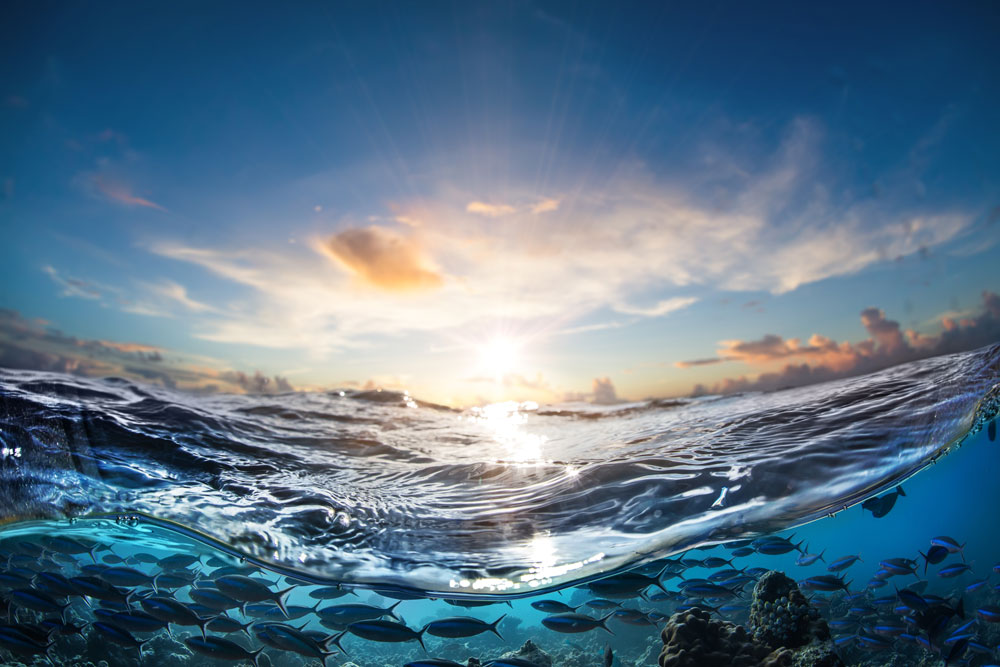
But there remain some operating conditions which are still not widely considered during noise and vibration analysis. First among these, and probably the noisiest, is the maneuvering operation.
Maneuvering is arguably the “business card” of a yacht because it is the first navigation mode used on exiting the harbour. Imagine inviting friends to a new yacht: cocktails are served, passersby in the marina are observing this gorgeous yacht depart, and suddenly everyone – owners, guests, observers - is bombarded by noise from the thrusters. Not a very nice image, is it?
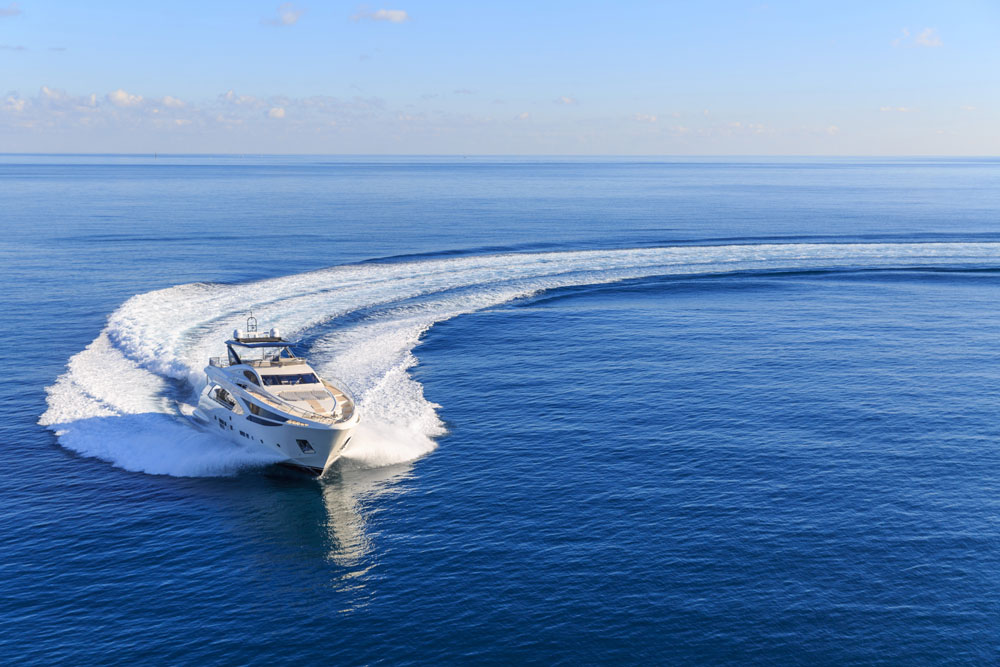
However, noise and vibration experts are working towards a solution, and with specialist software it is possible to foresee and manage noise and vibration levels onboard and outboard yachts during maneuvering conditions.
Side thrusters by their nature are noisy machines, both in terms of airborne and structure-borne noise. It is possible to hear them from all areas of the yacht and beyond - think of passengers on nearby yachts, passersby in the marina, and also fish and mammals!
While it is still not possible to install completely silent thrusters due to technological limits, there are a growing number of solutions under investigation which should help reduce maneuvering noise and vibration levels in in the future.
Experts can now propose mitigation solutions: a case-by-case analysis of the yacht can include investigation of the foundations and bow structures, as well as the components of its insulation, absorption and damping materials. Such analysis can lead to alternative proposals, and even a different choice of side thruster machinery.
Potential solutions will be evaluated by noise and vibration experts, with the aid of their extensive experience and dedicated software that uses Finite Element Analysis, Statistical Energy Analysis and Ray Tracing technology.
Since noise and vibration are not only objective but also subjective matters, the contribution of the owner is important to optimize the onboard comfort of the yacht. Noise and vibration experts and the owner should work together to optimize specific conditions.
As with all products relating to yachts today, it is crucial to listen to the final user of the yacht and customize equipment and design in order to meet the owner’s own personalized perception of comfort.
In alignment with global trends, Taiwanese shipyards are actively incorporating advanced technologies, environmental features, and sustainable practices into their yacht designs.
In 2023, Taiwan ranked fourth globally in terms of orders for large power yachts over 80 feet.
Manufacturers have strategically integrated upstream and downstream supply chains, leading to continuous year-on-year growth in output value. The country has developed a strong and growing production base for clients worldwide.
Taiwan’s largest client base is in the US, which accounted for 73.1% of its yacht exports in 2023. Long-term supply contracts with US yacht agents contribute to this sustained export success.
The industry has bounced back strongly from the COVID pandemic. Following supply chain delays and geopolitical uncertainty, the country’s yacht makers saw a 25.2% drop in output value in 2021 to $ 180 million. However, by 2022, it had increased overall yacht exports again, achieving a remarkable 55.2% growth that year in output value.
More than half of Taiwan’s yacht manufacturers, producing 80% of the national output value, are based in the yacht production hub of Kaohsiung City.
The country’s top three yacht manufacturers - Ocean Alexander Yachts, Horizon Yachts, and Kha Shing (OEM Hargrave Yachts) - are all based in Kaohsiung, which has an excellent manufacturing industry to support the production of yachts.
Domestic demand for yachts in Taiwan is now also growing, as improved living standards have fuelled new demand for water activities and leisure recreation.
Yachts are increasingly popular for sea tourism, sailing races, boating, fishing, and other water sports, though the scarcity of yacht marinas and related facilities remains a challenge.
The Taiwanese government is actively encouraging private investment, and has relaxed legal restrictions on the development of the domestic yacht industry.
The country is benchmarking its practices against countries like the US, Australia and New Zealand, to make continuous adjustments to deregulation and create new laws aimed at opening up water activities and developing new marinas.
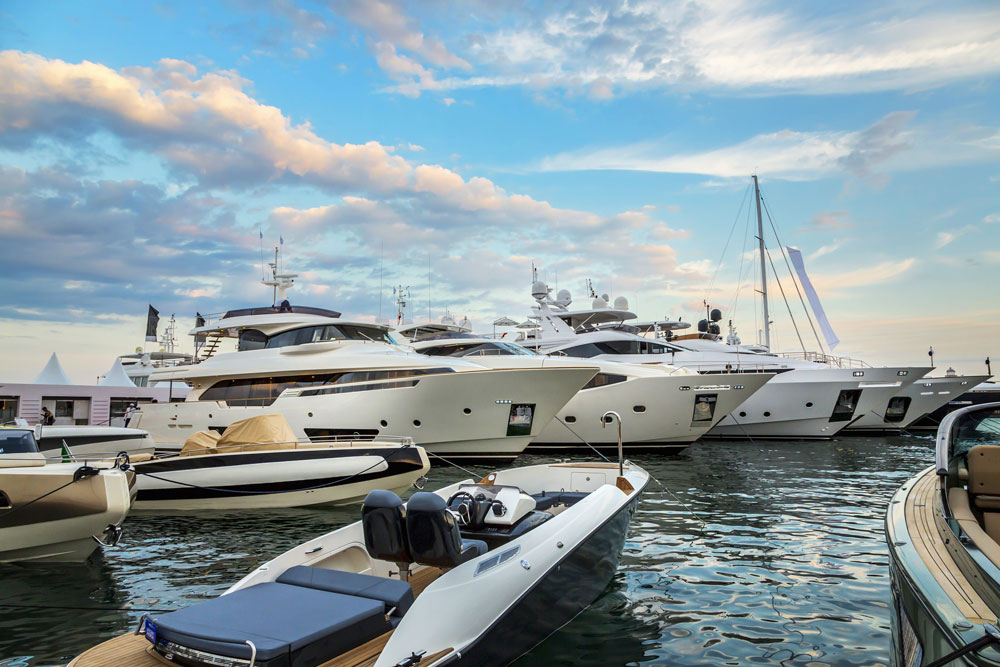
RINA collaborates closely with renowned yacht builders, ensuring safety, quality, and compliance throughout the yacht construction process. Authorized by the Taiwan Port Authority, RINA serves as the local yacht certifying organization and it is conducting inspections and certification processes for all interested players in the industry.
As we move into the energy transition, RINA is actively collaborating with Taiwanese industry stakeholders to drive innovation beyond certification: RINA is also championing decarbonization and sustainable practices. With this as a backdrop, Taiwan’s yacht industry stands at the intersection of tradition and innovation, and is poised for continued expansion both domestically and globally.
With strategic partnerships, technological advancements, and a commitment to quality, it is charting a clear course towards a bright future on the open seas.
